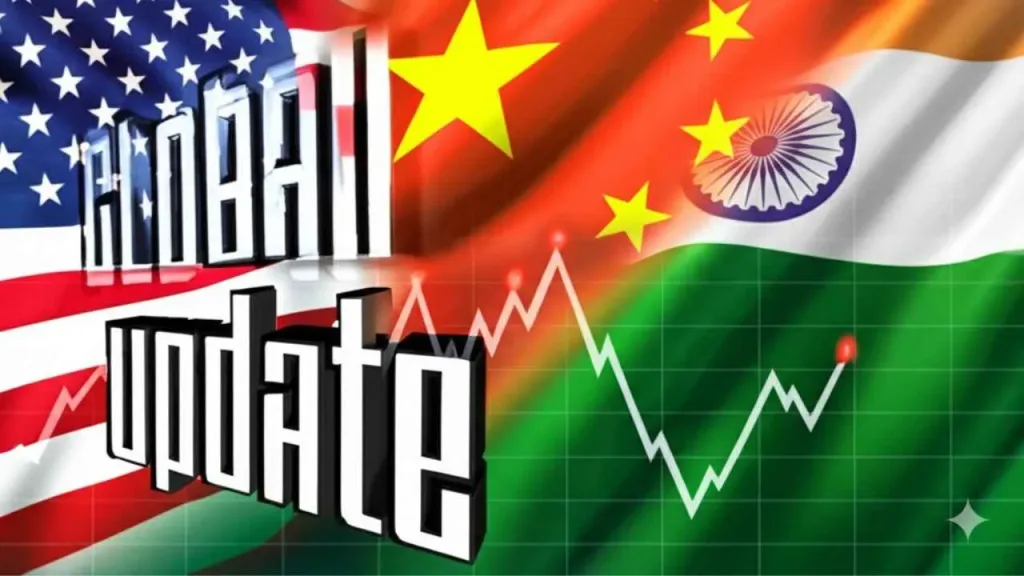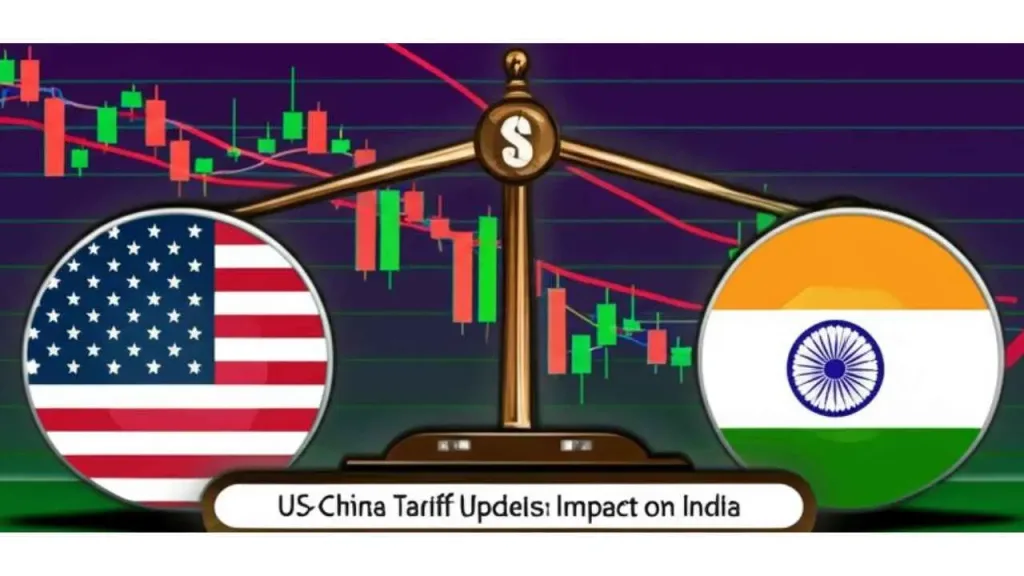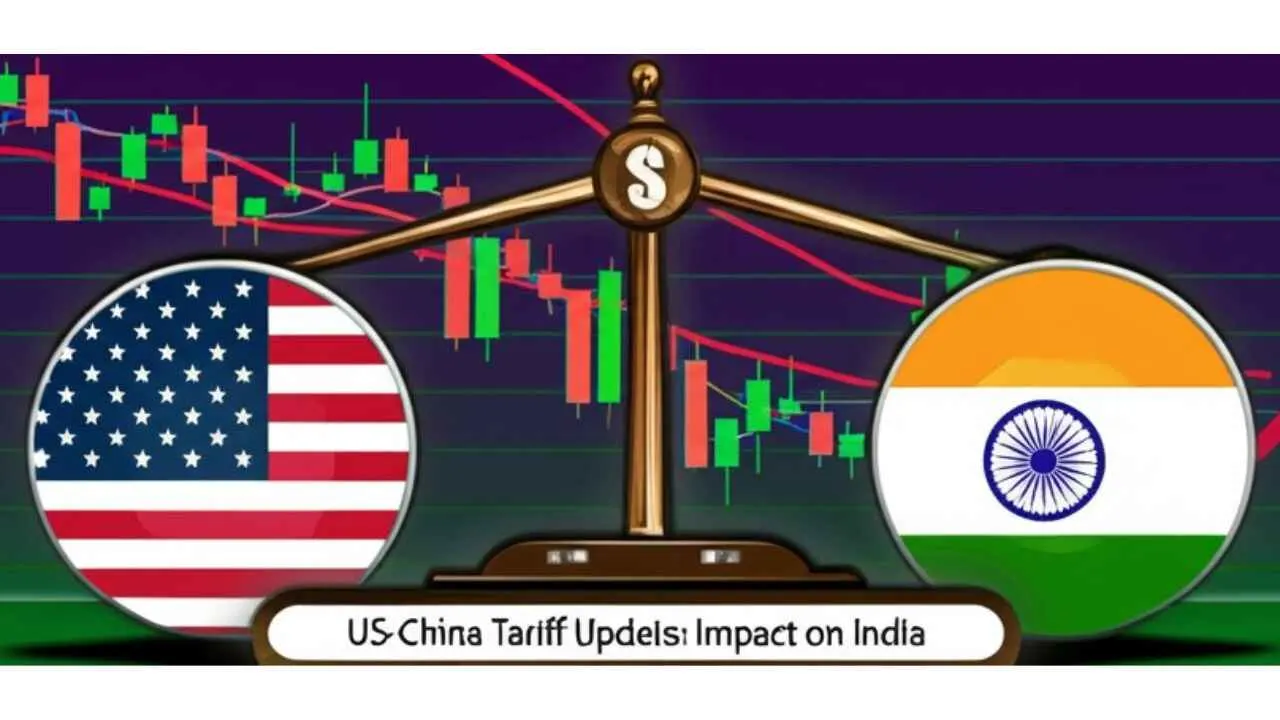In an era where international trade can send ripples through global economies, today’s developments in Washington and Beijing are sending waves across markets, with the Indian stock market feeling the tremors. Investors are on edge, watching a series of high-stakes negotiations and announcements unfold—each one potentially altering the course of global trade.
At the heart of the day’s drama was a key press conference at the White House, where U.S. Treasury Secretary Janet Yellen addressed a range of critical issues, from tariffs to trade talks with China and India. These announcements are poised to influence not just the U.S. economy, but also the Indian market, which has been closely tracking developments in Washington and Beijing.
Let’s break down the key takeaways from today’s press conference and what they mean for global markets, with a particular focus on India.
1. The U.S.-China Tariff Tug-of-War: A New Chapter
Yellen’s most striking comment during the briefing was a direct challenge to China over its imposition of tariffs on U.S. goods. In her words, “The tariffs China has placed on U.S. exports are increasingly becoming a self-inflicted wound.” The U.S. Treasury Secretary made it clear that China’s own actions—targeting key U.S. exports like agricultural products—could soon start to backfire on the Chinese economy, affecting everything from manufacturing to trade balance.
This pointed remark comes at a time when many are questioning the effectiveness of ongoing tariff battles between the two largest economies in the world. Yellen hinted that the U.S. is not only prepared to confront China over these tariffs but may also make some important moves in its relationship with India.
2. U.S.-India Relations: The Dawn of a New Trade Era?
Yellen didn’t just focus on China. She also touched on the increasingly important relationship between the U.S. and India, signaling positive strides in the trade discussions between the two nations. “We are encouraged by the progress made in discussions with India,” Yellen noted, referring to ongoing bilateral trade negotiations. For investors in India, this is a crucial moment—one that could lead to fresh agreements, potentially smoothing out any tariff issues and creating new economic opportunities.
Both nations have been making moves to strengthen their economic ties, and the potential for a more robust U.S.-India trade partnership seems brighter than ever. As both markets continue to grow, the impact of these discussions will be felt not just in trade volumes but also in stock market performance.

3. China Softens Its Stance: Tariffs on U.S. Ethanol Eased
In a curious twist, shortly after Yellen’s remarks, China announced a shift in its approach to tariffs. In a move that came just 20 minutes after her press conference, Beijing eased the heavy 125% tariff on U.S. ethanol, which had been imposed earlier this month. The tariff had hit Chinese petrochemical companies hard, particularly those importing ethanol for industrial use.
By lifting this tariff, China is acknowledging the strain its trade policies have put on certain industries. It’s also a signal that Beijing is willing to make tactical adjustments in its tariff strategy, possibly to prevent further economic fallout.
This move has implications far beyond ethanol alone—it suggests that China is carefully recalibrating its approach to tariffs, considering both domestic pressures and global trade relations.
4. India’s Markets: Eyes on Global Trade Shifts
Back in India, the effects of these announcements are already being felt on the ground. As the U.S. and China take steps toward easing tensions, Indian markets are reacting to the possibility of greater stability and trade flow. Investors have been showing a renewed sense of optimism, with Foreign Institutional Investors (FII) and Domestic Institutional Investors (DII) both actively buying into the market.
Today, net purchases amounted to ₹3,335 crore—indicative of the growing confidence among traders, spurred by the hope that the evolving trade dynamics could benefit India. For many, the focus now shifts to potential tariff adjustments between the U.S. and India, as well as the broader geopolitical shifts that could lead to stronger economic ties between the two nations.
But amid the optimism, there’s caution. The Nifty 50 index remains tightly constrained within a narrow range between 24,400 and 24,500. While the market’s momentum is positive, it is clear that a breakout is needed to trigger further growth.
5. Market Watch: Critical Levels to Track in India’s Trading Day
In the Indian market, all eyes are on key technical levels that could signal a shift in momentum. The Nifty 50 index has been consolidating around 24,400 to 24,500. A break above this range could signal a bullish push, potentially propelling the index higher. However, a drop below 24,275 could trigger a bearish reversal, with the next support level around 24,170.
For traders, the key is patience and precision. The market is currently in a holding pattern, and unless key levels are breached, we are likely to see a continued sideways movement. In such a volatile environment, traders must remain cautious and avoid jumping into positions without confirmation.
6. Bank Nifty: Holding the Line at 55,500
The Bank Nifty index, which tracks the performance of India’s financial sector, is also showing signs of resistance around the 55,500 mark. A breakout above this level could lead to a significant upward move, particularly if the broader market sentiment remains positive. However, a failure to hold above this level could signal a shift toward a bearish trend.
Traders should watch this level closely and be ready to act if a breakout occurs. As always, the key to successful trading is staying informed and prepared, rather than rushing into decisions.
7. Sensex: Navigating the Bulls and Bears
On the Sensex front, key levels to monitor are 80,030 and 80,180, which currently serve as the battleground between bulls and bears. If the Sensex falls below this range, bearish momentum could take over, but if it sustains above these levels, the bulls could regain control, setting the stage for further gains.

Given the current market conditions, traders are advised to tread carefully within this range. The middle zone between 80,180 and 80,340 should be avoided, as it represents a potential trap zone where price action may be too unpredictable. Instead, focus on decisive breaks above or below these key levels for clearer directional moves.
8. Conclusion: A Market at Crossroads
As we watch the ongoing developments in U.S.-China and U.S.-India relations, it’s clear that the next few weeks could be a critical turning point for global trade—and, by extension, the Indian market. For now, the focus is on key tariff decisions, the potential for trade agreements, and the delicate balance between bullish and bearish market pressures.
With markets still adjusting to these changes, the advice is simple: stay alert, stay strategic, and wait for confirmation before making bold moves. The global trade landscape is shifting, and how India navigates this evolving situation could have far-reaching consequences for its economy—and its stock market.
Investors, prepare for volatility but remain patient. The real opportunities are likely to emerge once the current market ranges are broken, giving way to clearer trends. Keep a close watch on the unfolding global trade narrative, as it will likely shape the Indian market in the weeks to come.
